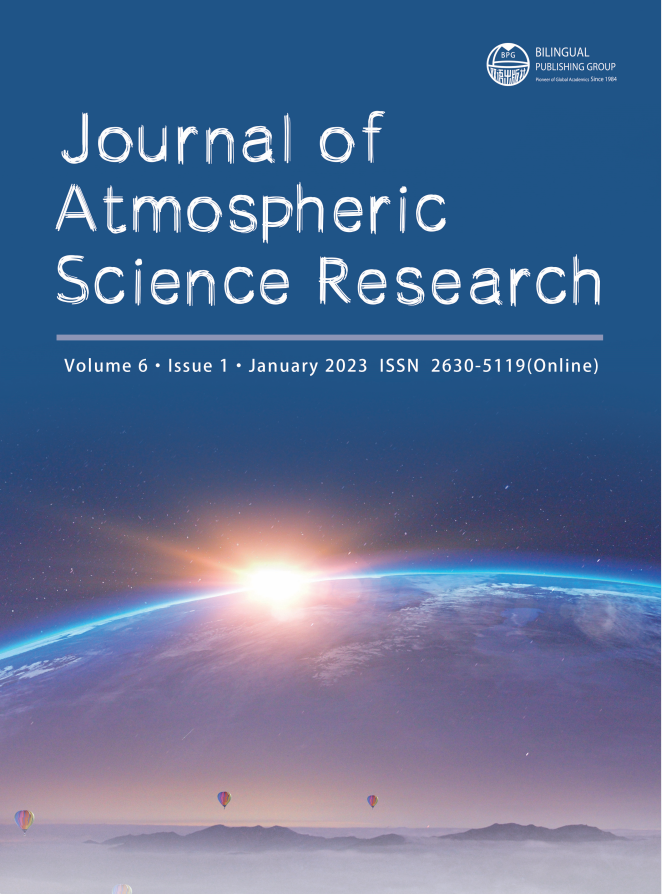-
861
-
411
-
362
-
359
-
350
Indoor Air Pollution and Its Determinants in Household Settings in Jaipur, India
DOI:
https://doi.org/10.30564/jasr.v6i1.5284Abstract
Individuals spend 90% of their time indoors, primarily at home or at work. Indoor environmental factors have a signifcant impact on human well-being. It was a longitudinal study that assessed the major factors that reduce indoor air quality, namely particulate matter, and bio-aerosols, using low-cost sensors and the settle plate method, respectively also to determine the effect of atmospheric parameters and land use patterns in households of commercial, industrial, residential, slum, and rural areas of the city. PM2.5 concentration levels were similar in most parts of the day across all sites. PM10.0 concentration levels increased indoors in a commercial area. PM2.5 concentration showed a negative correlation with temperature and a positive correlation with relative humidity in some areas. Very high values of PM2.5 concentration and PM10.0 concentration have been observed in this study, inside households of selected rural and urban areas. Pathogenic gram-positive cocci, gram-positive rods, Aspergillus, and Mucor species were the most common bacterial and fungal species respectively found inside households. This study examined particulate matter concentration along with bio-aerosols, as very less studies have been conducted in Jaipur the capital of Rajasthan, a state in the western part of India which assessed both of these factors together to determine the indoor air quality. Rural households surrounding the periphery of the city were found to have similar pollution levels as urban households. So, this study may form the basis for reducing pollution inside households and also for taking suitable measures for the reduction of pollution in the indoor environment.Keywords:
Indoor air pollution; Particulate matter; Bio-aerosolsReferences
[1] Saud, T., Gautam, R., Mandal, T.K., et al., 2012. Emission estimates of organic and elemental carbon from household biomass fuel used over the Indo-Gangetic Plain (IGP), India. Atmospheric Environment. 61, 212-220.
[2] Neidell, M.J., 2004. Air pollution, health, and socio-economic status: The effect of outdoor air quality on childhood asthma. Journal of Health Economics. 23(6), 1209-1236.
[3] Huang, H.L., Lee, M.K., Shih, H.W., 2017. Assessment of indoor bio-aerosols in public spaces by real-time measured airborne particles. Aerosol & Air Quality Research. 17(9).
[4] Leech, J.A., Nelson, W.C., Burnett, R.T., et al., 2002. It’s about time: A comparison of canadian and american time-activity patterns. Journal of Exposure Analysis. Sci. Environmental. Epidemiology. 12, 427-432. doi: https://doi.org/10.1038/sj.jea.7500244
[5] Kumar, P., Imam, B., 2013. Footprints of air pollution and changing environment on the sustainability of built infrastructure. Science of Total Environment. 444, 85-101. doi: https://doi.org/10.1016/j.scitotenv.2012.11.056
[6] Shiraiwa, M., Ueda, K., Pozzer, A., et al., 2017. Aerosol health effects from molecular to global scales. Environmental Science and Technology. 51, 13545-13567. doi: https://doi.org/10.1021/acs.est.7b04417
[7] Vardoulakis, S., Fisher, B.E.A., Pericleous, K., et al., 2003. Modelling air quality in street canyons: A review. Atmospheric Environment. 37, 155-182. doi: https://doi.org/10.1016/S1352-2310(02)00857-9
[8] Vardoulakis, S., Giagloglou, E., Steinle, S., et al., 2020. Indoor exposure to selected air pollutants in the home environment: A systematic review. International Journal of Environmental Research & Public Health. 17(23), 8972. doi: https://doi.org/10.3390/ijerph17238972
[9] Klepeis, N.E., Nelson, W.C., Ott, W.R., et al., 2001. The national human activity pattern survey (NHAPS): A resource for assessing exposure to environmental pollutants. Journal of Exposure Analysis and Environmental Epidemiology. 11, 231-252. doi: https://doi.org/10.1038/sj.jea.7500165
[10] Huffaker, M., Phipatanakul, W., 2014. Introducing an environmental assessment and intervention program in inner-city schools. Journal of Allergy and Clinical Immunology. 134, 1232- 1237.
[11] Jindal, S.K., Aggarwal, A.N., Jindal, A., 2021. Household air pollution in India and respiratory diseases: Current status and future directions. Current Opinion in Pulmonary Medicine. 26(2), 128-134. doi: https://doi.org/10.1097/MCP.0000000000000642
[12] Kalpana, B., Padmavathi, R., Sankar, S., et al., 2011. Air pollution from household solid fuel combustion in India: An overview of exposure and health related information to inform health research priorities. Global Health Action. 4. doi: https://doi.org/10.3402/gha.v4i0.5638
Downloads
How to Cite
Issue
Article Type
License
Copyright © 2023 Authors

This is an open access article under the Creative Commons Attribution-NonCommercial 4.0 International (CC BY-NC 4.0) License.




 Anukrati Dhabhai
Anukrati Dhabhai






